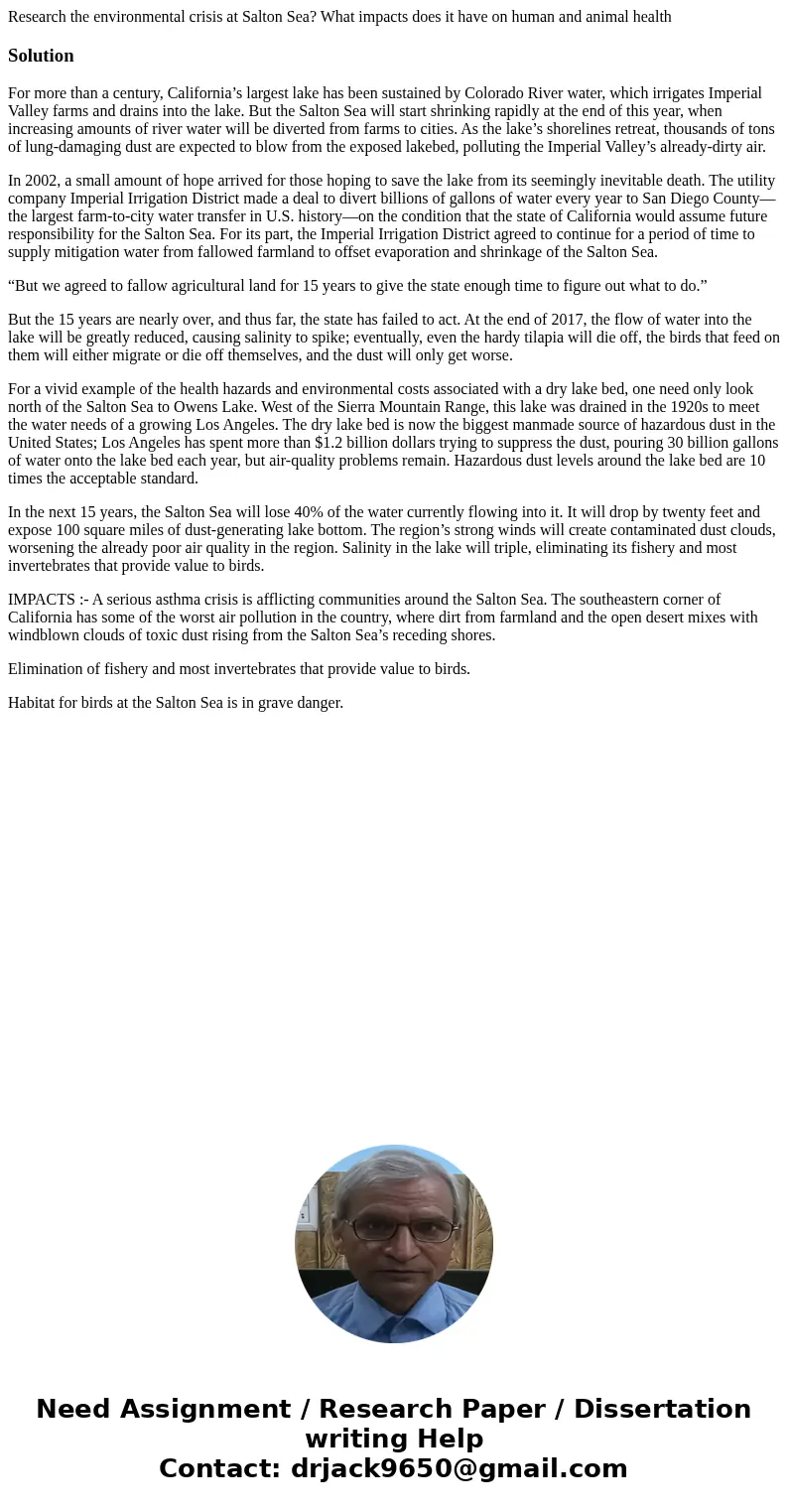Research the environmental crisis at Salton Sea What impacts
Solution
For more than a century, California’s largest lake has been sustained by Colorado River water, which irrigates Imperial Valley farms and drains into the lake. But the Salton Sea will start shrinking rapidly at the end of this year, when increasing amounts of river water will be diverted from farms to cities. As the lake’s shorelines retreat, thousands of tons of lung-damaging dust are expected to blow from the exposed lakebed, polluting the Imperial Valley’s already-dirty air.
In 2002, a small amount of hope arrived for those hoping to save the lake from its seemingly inevitable death. The utility company Imperial Irrigation District made a deal to divert billions of gallons of water every year to San Diego County—the largest farm-to-city water transfer in U.S. history—on the condition that the state of California would assume future responsibility for the Salton Sea. For its part, the Imperial Irrigation District agreed to continue for a period of time to supply mitigation water from fallowed farmland to offset evaporation and shrinkage of the Salton Sea.
“But we agreed to fallow agricultural land for 15 years to give the state enough time to figure out what to do.”
But the 15 years are nearly over, and thus far, the state has failed to act. At the end of 2017, the flow of water into the lake will be greatly reduced, causing salinity to spike; eventually, even the hardy tilapia will die off, the birds that feed on them will either migrate or die off themselves, and the dust will only get worse.
For a vivid example of the health hazards and environmental costs associated with a dry lake bed, one need only look north of the Salton Sea to Owens Lake. West of the Sierra Mountain Range, this lake was drained in the 1920s to meet the water needs of a growing Los Angeles. The dry lake bed is now the biggest manmade source of hazardous dust in the United States; Los Angeles has spent more than $1.2 billion dollars trying to suppress the dust, pouring 30 billion gallons of water onto the lake bed each year, but air-quality problems remain. Hazardous dust levels around the lake bed are 10 times the acceptable standard.
In the next 15 years, the Salton Sea will lose 40% of the water currently flowing into it. It will drop by twenty feet and expose 100 square miles of dust-generating lake bottom. The region’s strong winds will create contaminated dust clouds, worsening the already poor air quality in the region. Salinity in the lake will triple, eliminating its fishery and most invertebrates that provide value to birds.
IMPACTS :- A serious asthma crisis is afflicting communities around the Salton Sea. The southeastern corner of California has some of the worst air pollution in the country, where dirt from farmland and the open desert mixes with windblown clouds of toxic dust rising from the Salton Sea’s receding shores.
Elimination of fishery and most invertebrates that provide value to birds.
Habitat for birds at the Salton Sea is in grave danger.

 Homework Sourse
Homework Sourse